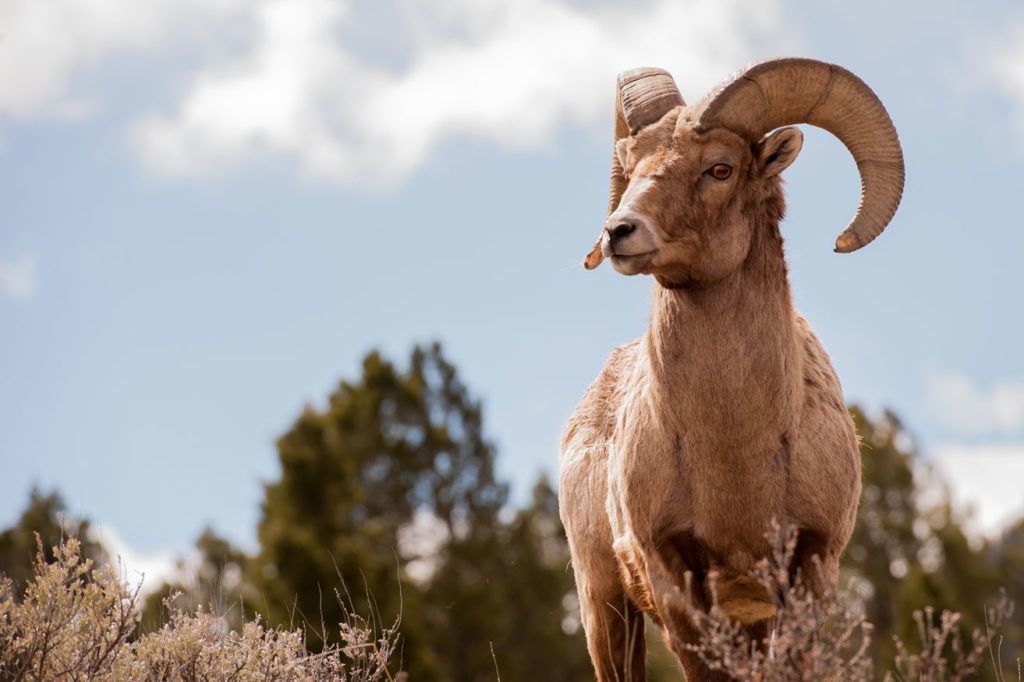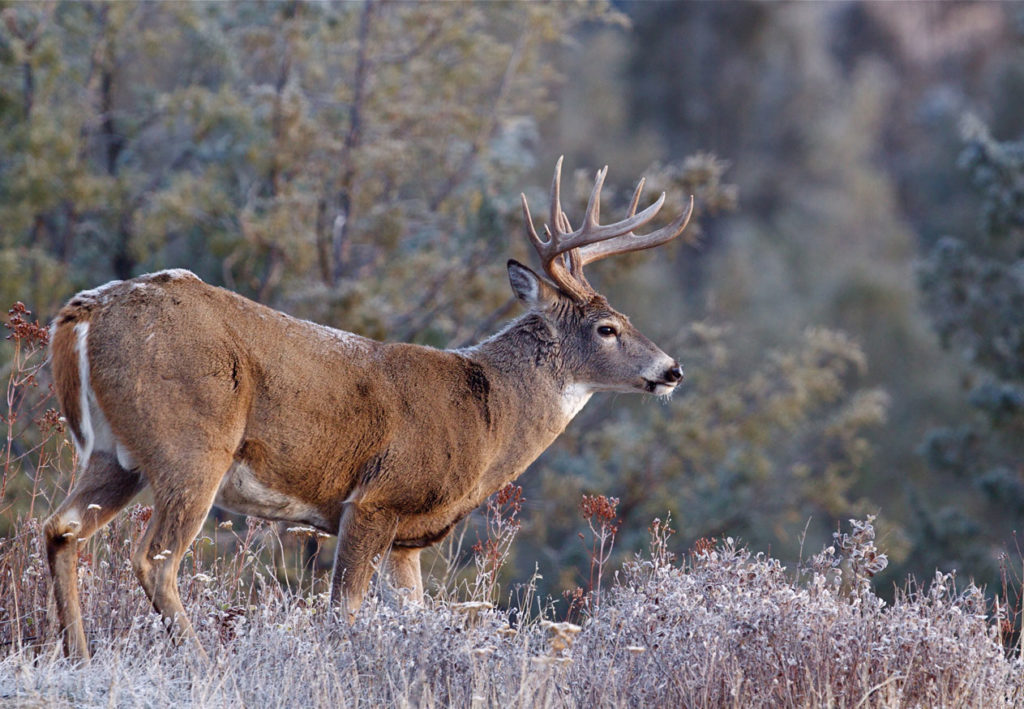The Black Hills area is one of the most beautiful and varied ecosystems in the world. It goes from prairie to mountain in a very short drive and both ecosystems overlap in several areas giving photographers an opportunity to photograph many different species in a close environment. This is a unique land and worth the time spent getting to know the rich diversity offered by the Black Hills.
No shooting trip to the Black Hills is complete without a day in Custer State Park.
The Wildlife Loop at the southern end of the park is hardy, yet accessible terrain that yields great landscape backdrops for some of the country’s finest wildlife photography. If you are looking to shoot bison, this is the place! The herd is larger than in Yellowstone, with better public access to their range. Bison are not the most active animal on the land. They spend most of their time eating and doing a great ‘Buffalo Nickel’ imitation. If you are hoping for activity from these great beasts try spring, around late March, when the cows are calving. Cruising the back roads of CSP 4 or 5 will yield large herds of cows with very active and playfully curious calves. The cows are protective, but your vehicle (4wd on the dirt roads please!) will be the best cover. The calves snort, kick, run, and check out the world with delightful energy. A long lens (300mm or better) is not necessary because the herds walk around the vehicle.
The other time of activity for bison is August when the bulls come down from the high country to mate. Normally solitary, these monsters will come into the pastures two or more at a time to do battle with one another for the right to produce next year’s young. A large bull can weigh over 1000 lbs, run at 35mph, (faster than a horse in a sprint) and spin on a dime. When two of these titans finish posturing and get down to battle, the photographs are spectacular! Dirt flies, nostrils flare, the flesh-bruising thumps can be heard for a mile. The bulls’ fights do not last long, and only occasionally is a male injured, but the shots are action packed and intense. If you have never seen these normally quiet creatures spar, you have missed what makes the bison the stuff of legend.
After the rush of shooting bison, try a more mellow photographic experience.
Head north to Mt. Rushmore for the stunning mountain goat. These snow-white beasts love to eat the clipped green grass of the monument’s paths and byways. Not native to South Dakota, mountain goats escaped captivity from pens at Custer State Park and have thrived in the rocky, lichen covered rocks of these very old mountains. September and October are the best times for shooting goats because they have grown heavy, plush winter hair, and the stunning colors of the autumn leaves add intensity. If you cannot find goats at Mt. Rushmore, take the short, but beautiful drive on Hwy. 244 west to Hwy. 385 south to Crazy Horse Memorial just north of Custer. The mountain goats love the high vistas, rocky outcroppings, and vast open fields surrounding Crazy Horse.
Two of the most difficult big game animals to get photographs of in the Black Hills are the Rocky Mountain bighorn sheep, and the elusive North American elk.
Custer State Park is a great place to find bighorn sheep, look for them along Highway 87 (Needles Highway) from just above The Mills Cutoff road (Black Hills Playhouse) up to around the Custer Cutoff road. Another favorite haunt is Highway 16A along Grace Coolidge Creek near the Coolidge campground and the Game Lodge. The best time of the year to photograph sheep is the spring and fall when their coats look finest. In the fall you may have the opportunity to catch the rams during the rut, when they are competing for the right to mate. It is a magnificent sight when they rear up and ram their heads together; it creates a sound that can be heard for miles as it echoes through the mountains.
The most dramatic backdrop for photographing bighorns is the Badlands.
A trip to this strange and beautiful National Park could reward you with some of your most striking images of bighorns. The sheep can be difficult to spot; they match the landscape well, but look for them near the Pinnacles and Ancient Hunters Overlooks.
Wind Cave National Park will provide you with stunning vistas and perhaps a glimpse of the regal bull elk that wander the Park. Wind Cave will provide you with the best opportunity to photograph elk. They are very elusive and spook easily, so stealth and a keen eye are necessary for success. The preeminent places to find elk are Wind Cave Road 6 near Boland Ridge and behind Rankin Ridge just off Highway 87.
While you are in the Park, look for the many prairie dog towns spread throughout the area. These comical little performers will provide you with great photos and will entertain you with their antics. Don’t get too close and do not sit in the middle of the town, they carry many diseases, including rabies. They may be cute to watch but remember, they are wild animals and their bite can be infectious. Please do not feed the prairie dogs, especially salty foods, they get their water from the foods they eat, so your act of kindness could do damage or even kill these wonderful inhabitants of the prairie.
Editors Note: Use extreme caution when photographing any wild animals, and do not approach them – remember that they are just that – WILD animals! Stay at a safe and escapable distance when photographing any animals.
By Roxanne Heizler and Steven Page
Steven and Roxanne moved to the Black Hills 11 years ago for of the photographic possibilities presented by the area and have made the Hills their home. They both received their M.A. in photography from St. Cloud State University in Minnesota. Roxanne is the assistant manager of the gift lodge at Mt. Rushmore and Steve is a part time freelance photographer and both are still pursuing their love of wildlife and outdoor photography.


